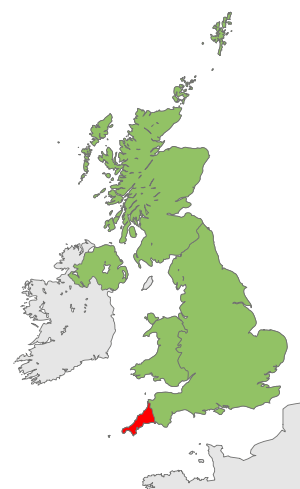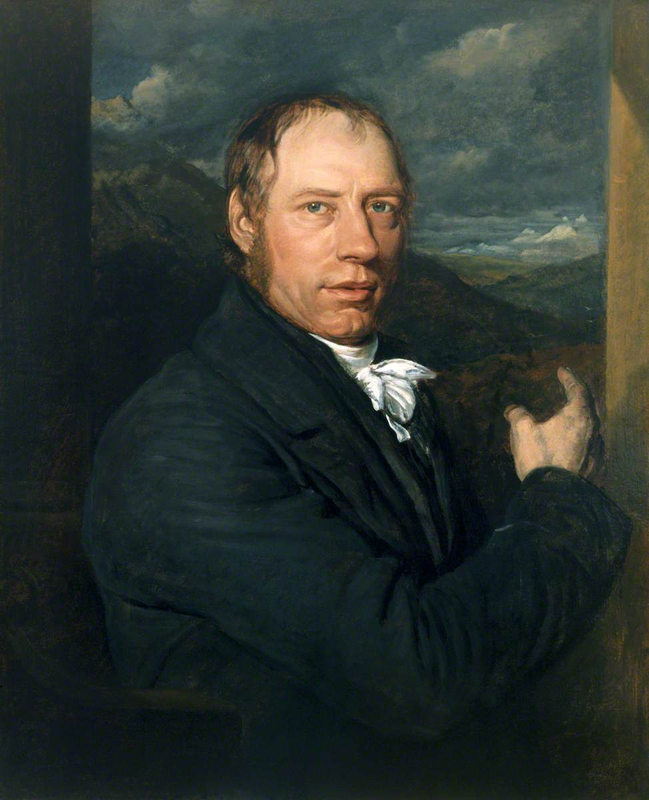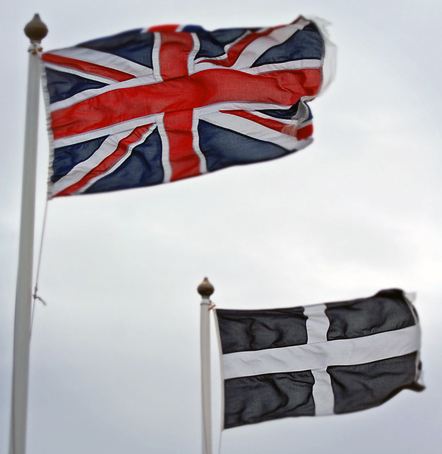Iternational Cooperation

Duchy of Cornwall
 Posted by
pavel714
Posted by
pavel714
History of Cornwall
The Cornish are the descendants of the Celts who migrated to British Isles from the Pyrenees. In antiquity, the Celts formed a number of groups in the British Isles, including the Britons in the south. On the territory of Cornwall, the British tribes formed the kingdom of Dumnonia. When in the 1st century A.D. e. the Romans captured most of England, Dumnonia remained virtually independent. The kingdom was closely connected with Brittany; Cornish and Breton were no different during this period. The turning point in the history of Cornwall was the Anglo-Saxon invasion of England (V-VI centuries). After the Battle of Deorham in 577, Cornwall was isolated from the other Britons by the Saxons from the kingdom of Wessex, which later became the kingdom of England. The confrontation between the Anglo-Saxons and the Cornish continued until 925, when Cornwall was conquered by its neighbor. A formal border was established between England and the county of Cornwall along the Teimar River. In 1337 the county of Cornwall received the status of a duchy and still is. It gradually lost its political independence from England, which caused the uprisings of the Cornish people, first of all, the unsuccessful uprising of 1497. In the first half of the 19th century, Cornish people were leaders in the smelting of tin and copper, but increased competition in these industries from Australia and Bolivia and the depletion of deposits led to unemployment, causing about 60% of the population to emigrate from Cornwall. Emigrants still have large diasporas in English-speaking countries. In Britain, Cornish families settled in North East England, working in the local coal mines.
 Posted by
pavel714
Posted by
pavel714

Richard Trevithick
 Posted by
pavel714
Posted by
pavel714
Cornish culture
The Industrial Revolution had a significant impact on the Cornish. Mining (in particular, mining of tin and copper) and industry reflected Cornish specificity. Leading Cornish engineer Richard Trevithick became a Cornish hero by developing a high-pressure steam engine that was used to pump water, as well as building a steam car. On February 21, 1804, the steam trolley invented by Trevithick was used to pull several trolleys between the ironworks of the city of Penydarren in Wales, becoming the world's first train. At the end of the 19th century, the growing popularity of Celtic culture in Europe aroused interest in the Cornish in the county. A revival of the Cornish language began in 1904 with the publication of A Dictionary of the Cornish Language. Since 1924, organizations devoted to Cornish culture have been organized. In 1951, the Cornish political party Sons of Cornwall was formed. An increased interest in Celtic languages and culture in the 1960s spurred the self-government movement in Cornwall. In Cornwall, cultural figures began to insist on the study of the Cornish language in schools, and nationalists demanded political autonomy for Cornwall - for example, the entry of Cornwall into the United Kingdom as a separate fifth part. The preservation of the original Cornish culture is due to the geographical isolation of Cornwall. The culture of the Cornish is strongly associated with the mining industry of the county. The Cornish have had a great influence on English cuisine, giving it many of their dishes.
 Posted by
pavel714
Posted by
pavel714

Anglicization of Cornwall
 Posted by
pavel714
Posted by
pavel714
Cornish language
The Cornish language is derived from the Brythonic branch of the Celtic languages. It was most common in the west of the Teimar River until the 1350s. Most Cornish nobles chose a Cornish-language motto on their own coats of arms to emphasize their special status. By the middle of the 17th century, the use of the Cornish language was territorially reduced to the far western territories, which caused a certain interest in the language among a number of researchers. The displacement of the Cornish language by English was completed at the end of the 18th century. A revival of the language began in 1904 with the publication of Henry Jenner's «Dictionary of the Cornish Language». Over the next few decades, interest in the Cornish language increased, and several systems of this language appeared based on sources from different centuries. In 2002, the Cornish language received official recognition under the European Charter for Regional Languages, and in 2008 the standard written form of the Cornish language was adopted. Despite the revival of the language, the number of its speakers remains insignificant - they are all, as a rule, self-taught enthusiasts. Cornish English is spoken throughout the county. Recently, however, Cornish has been taught in elementary schools, and BBC Radio Cornwall regularly broadcasts radio programs in Cornish.
 Posted by
pavel714
Posted by
pavel714

Flag of United Kingdom and Saint Piran's flag
 Posted by
pavel714
Posted by
pavel714
Cornish religion
In ancient times, the religion of the Cornish Britons was paganism, where the leading place was given to the priests - the druids. Early Christianity entered Cornwall as early as the 1st century. After the departure of Rome from Britain, Cornwall became a field of activity for missionaries. Celtic Christianity was brought to Cornwall in 520 from Ireland by Saint Petroc, a Gaelic monk. He left a granite monument with a high cross. Subsequently, Christianity was preached in Cornwall by other saints who are revered in the county today. After the Reformation in England, by order of King Edward VIII, worship in English was introduced in all churches of the kingdom, which forced out from church life local Celtic customs. The Catholic Church dominated Cornwall until the 19th century. Cornwall has its own tradition of honoring Celtic Christian saints. For example, honoring Saint Piran, a Christian abbot of the 5th century, patron of Cornwall and miners of tin ore. According to legend, Piran was an Irish scholar who studied Christianity in Ancient Rome and, at the behest of the King of Ireland, was supposed to drown in the sea, but instead he swam across it and came ashore in Cornwall to preach Christianity. The flag of Saint Piran - a black canvas with a white cross in the center - was adopted in 1838 as the flag of the duchy. Saint Piran's Day today is an annual holiday celebrated on March 5th.
 Posted by
pavel714
Posted by
pavel714